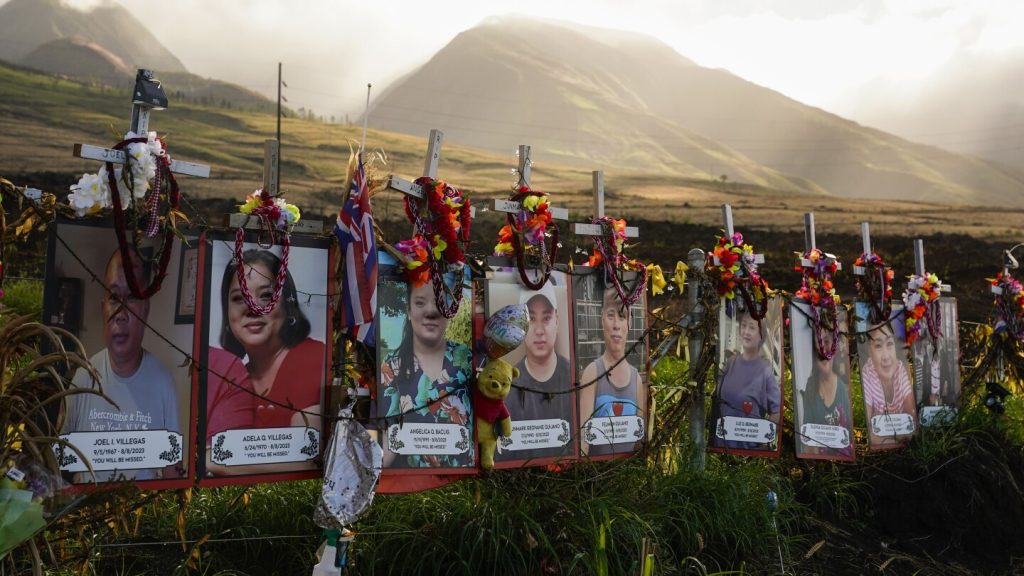Authorities are still investigating the deadly wildfire that struck Lahaina, Maui, in August 2023, resulting in the deaths of 101 people. Two reports released shed light on the events leading up to the catastrophe. The Fire Safety Research Institute (FSRI) provided a detailed timeline of the fire, while the Maui Fire Department’s after-action report outlined challenges faced by the department and made over 100 recommendations for improvements. One major issue highlighted in the reports was the breakdown in communication among emergency responders and agencies during the chaos of the wildfire.
The FSRI report revealed that firefighters and police received conflicting information about whether power lines had been de-energized, leading to delays in response. Furthermore, cellular networks were down, and emergency services were using separate communication channels, causing confusion and hindering coordination efforts. Residents and tourists were unable to receive emergency alerts, and 911 operators were overwhelmed with calls. The head of the Maui Emergency Management Agency was off-island during the crisis, receiving updates via text messages and calls, and delayed returning to the scene as the fire rapidly spread through the town.
The fire in Lahaina was described as swift and unrelenting, with limited escape routes for residents and tourists. Firefighters thought they had extinguished the initial blaze, only for it to reerupt and spread throughout the neighborhood. Strong winds exacerbated the situation, pushing embers and debris farther into the town. Roads became jammed with traffic, and visibility dropped to near-zero at times. Spot fires reached the ocean within 90 minutes, leaving people with little time to evacuate. Some individuals perished in their vehicles, while others sought refuge in the ocean or fled on foot to escape the flames.
Resources were scattered and stretched thin during the wildfire, with many firefighters risking their lives to save others. Back-up fire engines were not fully equipped with necessary gear, and mutual aid agreements between Hawaii counties were lacking. Language barriers also posed challenges, as firefighters struggled to communicate with non-English speakers about the need to evacuate. The reports emphasized the need for better coordination, resources, and communication strategies to prevent similar tragedies in the future.
Investigations are ongoing, with FSRI still awaiting information from the Maui Emergency Management Agency. The federal Bureau of Alcohol, Tobacco, Firearms and Explosives is also working on a report to determine the origin and cause of the fire. Authorities are taking steps to address the gaps in communication and response highlighted in the reports, with a focus on improving coordination, resource allocation, and emergency communication systems to ensure better preparedness for future emergencies.


